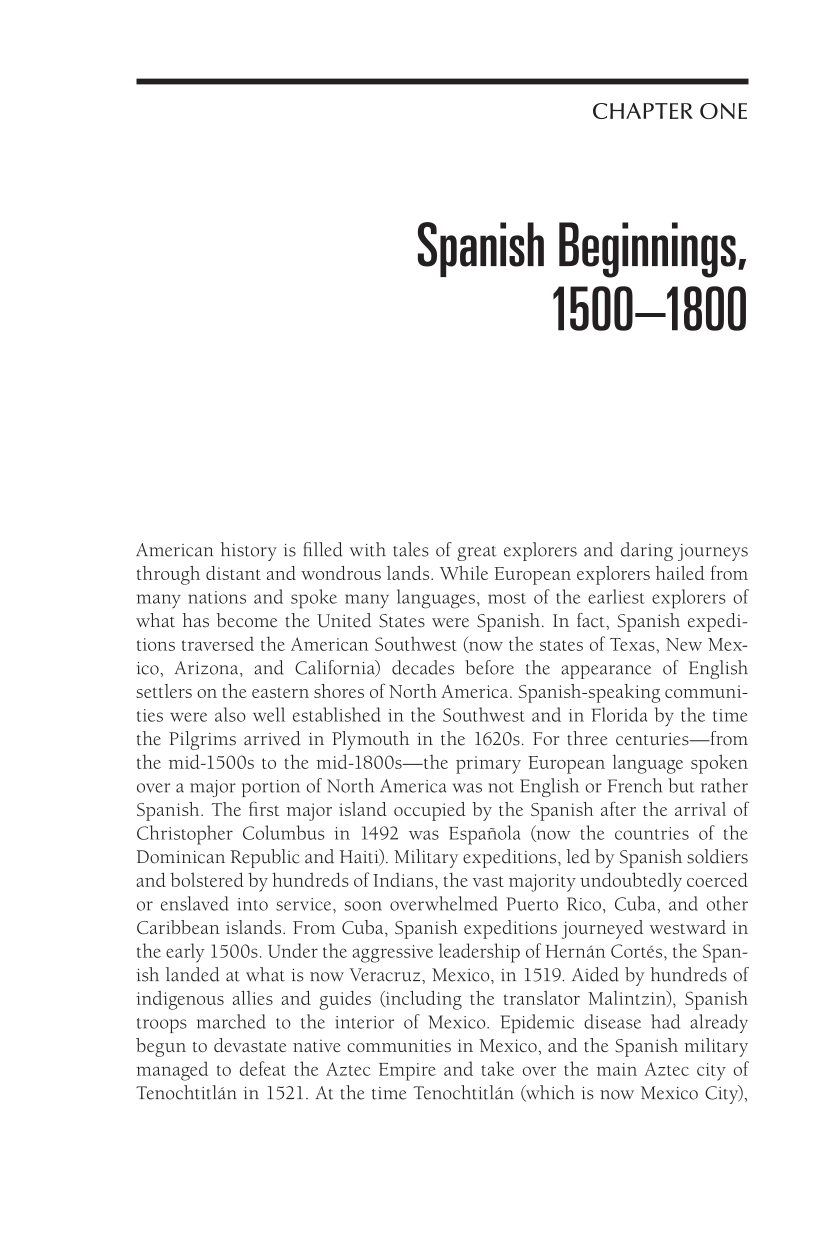chapter one
Spanish Beginnings,
1500–1800
American history is filled with tales of great explorers and daring journeys
through distant and wondrous lands. While European explorers hailed from
many nations and spoke many languages, most of the earliest explorers of
what has become the United States were Spanish. In fact, Spanish expedi-
tions traversed the American Southwest (now the states of Texas, New Mex-
ico, Arizona, and California) decades before the appearance of English
settlers on the eastern shores of North America. Spanish-speaking communi-
ties were also well established in the Southwest and in Florida by the time
the Pilgrims arrived in Plymouth in the 1620s. For three centuries—from
the mid-1500s to the mid-1800s—the primary European language spoken
over a major portion of North America was not English or French but rather
Spanish. The first major island occupied by the Spanish after the arrival of
Christopher Columbus in 1492 was Española (now the countries of the
Dominican Republic and Haiti). Military expeditions, led by Spanish soldiers
and bolstered by hundreds of Indians, the vast majority undoubtedly coerced
or enslaved into service, soon overwhelmed Puerto Rico, Cuba, and other
Caribbean islands. From Cuba, Spanish expeditions journeyed westward in
the early 1500s. Under the aggressive leadership of Hernán Cortés, the Span-
ish landed at what is now Veracruz, Mexico, in 1519. Aided by hundreds of
indigenous allies and guides (including the translator Malintzin), Spanish
troops marched to the interior of Mexico. Epidemic disease had already
begun to devastate native communities in Mexico, and the Spanish military
managed to defeat the Aztec Empire and take over the main Aztec city of
Tenochtitlán in 1521. At the time Tenochtitlán (which is now Mexico City),






































































































































































































































































































































